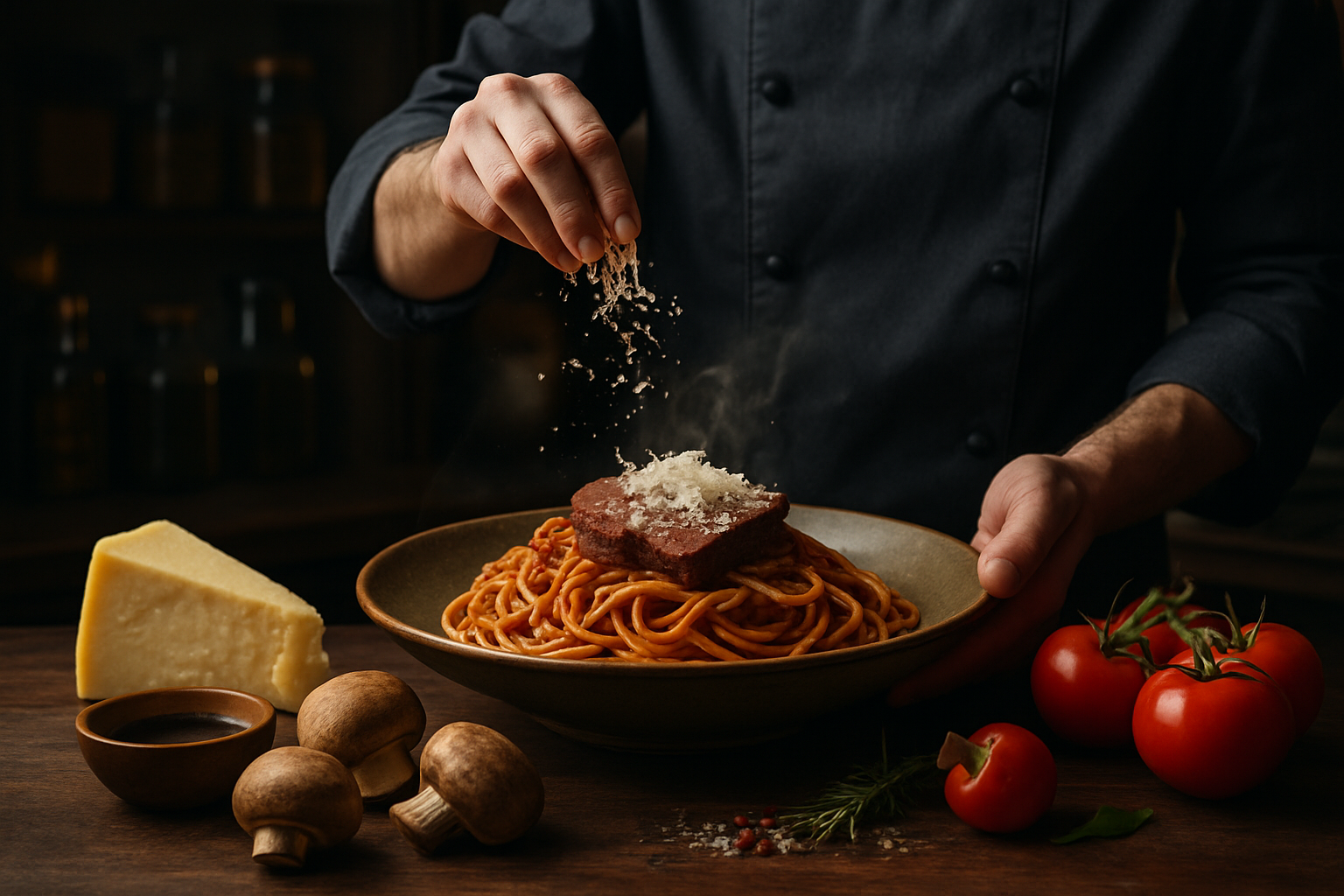Savory Umami Bombs: Exploring the Fifth Taste
Umami, the elusive fifth taste, has captivated food lovers and chefs alike. This article delves into the world of umami-rich ingredients and dishes, offering insights on how to elevate your cooking with this savory sensation. From traditional Asian ingredients to unexpected Western flavors, discover the magic of umami and transform your culinary creations.

Umami-Rich Ingredients to Stock in Your Pantry
To harness the power of umami in your cooking, it’s essential to stock your pantry with key ingredients. Aged cheeses like Parmesan and aged cheddar are excellent sources of umami, thanks to their high glutamate content. Dried mushrooms, particularly shiitake, are umami powerhouses that can add depth to soups, sauces, and stir-fries. Tomato paste, a concentrated form of tomatoes, is another umami-rich ingredient that can elevate pasta sauces and stews. Soy sauce, miso paste, and fish sauce are staples in Asian cuisine that pack a umami punch. For a vegetarian option, nutritional yeast flakes offer a cheesy, savory flavor that’s perfect for sprinkling on popcorn or incorporating into plant-based dishes.
Umami-Boosting Cooking Techniques
Certain cooking techniques can enhance the umami flavor in your dishes. Slow-roasting vegetables like tomatoes, onions, and garlic concentrates their natural glutamates, intensifying their umami taste. Caramelization, achieved through searing meats or browning onions, creates new flavor compounds that contribute to umami. Fermentation is another powerful technique for developing umami flavors, as seen in foods like kimchi, sauerkraut, and aged cheeses. Dry-aging meats not only tenderizes them but also increases their umami profile. Lastly, using a pressure cooker can help extract maximum flavor from ingredients like bones and vegetables, creating rich, umami-packed broths and sauces in less time than traditional methods.
Unexpected Umami Pairings
While many traditional umami combinations are well-known, exploring unexpected pairings can lead to exciting flavor discoveries. Try sprinkling nutritional yeast on fresh fruit like strawberries or mango for a surprisingly delicious contrast. Combine umami-rich mushrooms with chocolate in a savory mole sauce for a complex flavor profile. Experiment with adding a splash of soy sauce to caramel for a unique twist on dessert sauces. Incorporate miso paste into creamy pasta dishes for added depth and richness. Blend sun-dried tomatoes into homemade nut butters for a savory spread that’s perfect on sandwiches or as a dip for raw vegetables. These unconventional pairings showcase the versatility of umami and can inspire creative culinary explorations.
Umami in Global Cuisines
Umami plays a crucial role in many global cuisines, often defining their characteristic flavors. In Italian cooking, Parmesan cheese and tomatoes form the backbone of many dishes, providing a rich umami base. Japanese cuisine relies heavily on umami-rich ingredients like dashi (a stock made from kombu seaweed and bonito flakes), soy sauce, and miso. Chinese cooking often incorporates dried shiitake mushrooms and fermented black beans for depth of flavor. In Southeast Asian cuisines, fish sauce is a key umami component. Even in Western cuisines, ingredients like beef stock, Worcestershire sauce, and aged cheeses contribute significant umami notes. Understanding how different cultures utilize umami can inspire us to incorporate these flavors into our own cooking, creating more complex and satisfying dishes.
Umami Tips & Facts
• Umami can help reduce sodium intake by enhancing overall flavor without added salt.
• Breast milk is naturally high in umami, which may explain why humans are drawn to this taste from an early age.
• Umami flavors can make low-fat foods taste more satisfying, aiding in healthier eating habits.
• The umami taste can be enhanced by combining different umami-rich ingredients.
• Some wines, particularly aged red wines, can have umami characteristics.
• Umami flavors tend to linger on the palate longer than other tastes, contributing to a lasting satisfaction after meals.
Conclusion
Embracing umami in your cooking opens up a world of flavor possibilities. By understanding the science behind this fifth taste, stocking your pantry with umami-rich ingredients, and exploring innovative pairings, you can elevate your culinary creations to new heights. Whether you’re recreating traditional dishes or experimenting with fusion cuisine, the savory depth of umami will undoubtedly enhance your gastronomic adventures. So go forth and unleash the power of umami in your kitchen – your taste buds will thank you.





